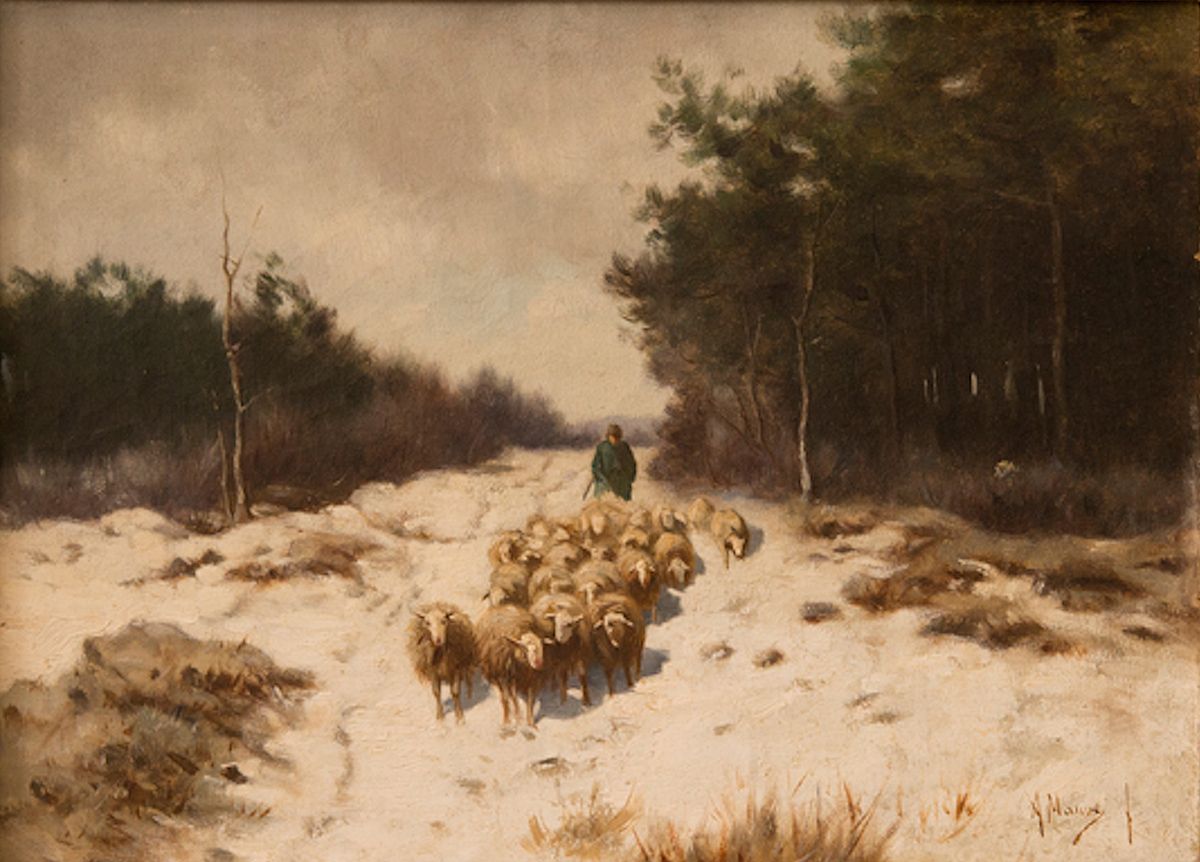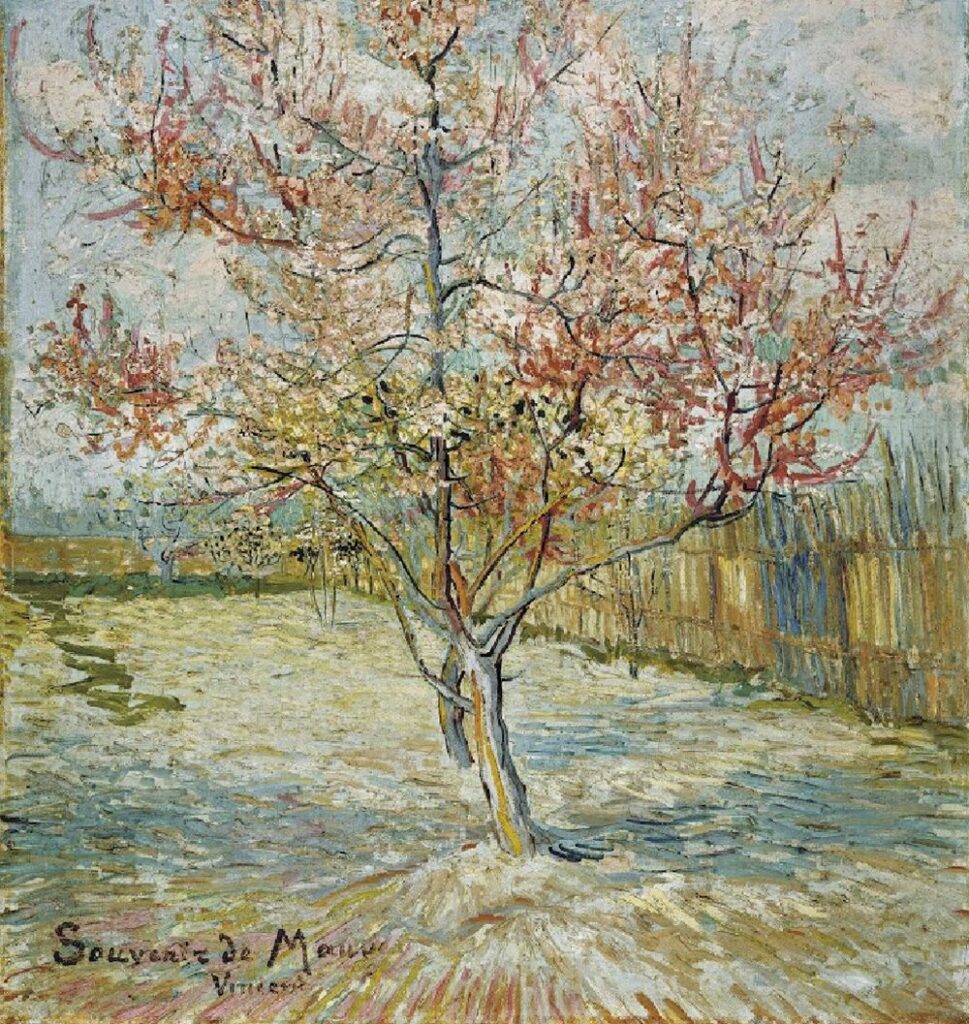Anthonij (Anton) Mauve (1838–88)
Snow Scene with Sheep, c. 1882–88
Oil on canvas
McMullen Museum of Art, Boston College, 1988.91

Jeffery Howe
Professor Emeritus, Art History

Mauve was a prominent member of “the Hague school,” a group of Dutch painters who sought to revive the tradition of naturalism that had characterized seventeenth-century Dutch painting through landscape and rural subjects. They have much in common with the French Barbizon artists, especially Jean-François Millet, Jules Dupré, and Constant Troyon. Snow Scene with Sheep is noteworthy for the delicacy of its tonal gradations and nuances of color. Nominally a realist scene, it also represents a nostalgia for a way of life that was already disappearing. A shepherd guides his small flock through the snow, persevering against the winter chill. The shepherd tending his flock has long been a metaphor for social and spiritual care.
Mauve influenced a number of painters, notably Vincent van Gogh (1853–90), his cousin by marriage. In his youth, Van Gogh kept a photograph of one of Mauve’s drawings hanging in his room, and always admired his paintings. Van Gogh commented that “A picture by Mauve…says more, and says it more clearly, than nature herself.” In late 1881 Mauve taught Van Gogh to paint in watercolor and helped him begin to explore the use of color in oil. Mauve even lent him paints and set him up in a studio near his house. Upon hearing of Mauve’s death in 1888, Van Gogh labeled one of his finest landscape studies, Pink Peach Trees, “Souvenir de Mauve.” A symbol of spring and resurrection, it was a fine memorial to his fellow Dutch artist.

